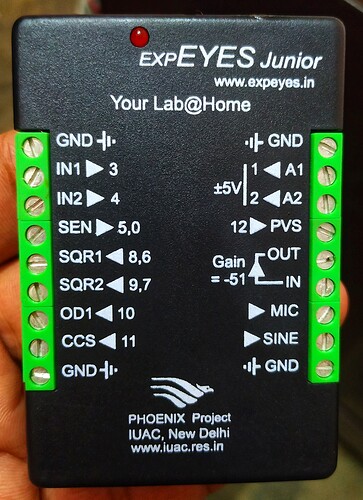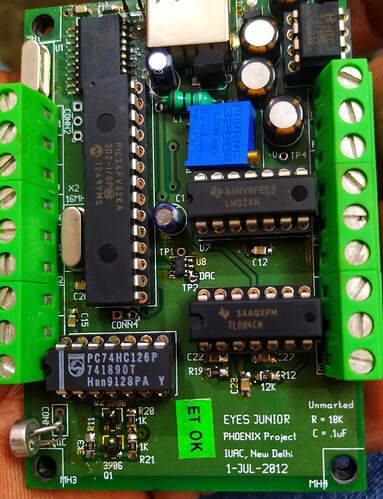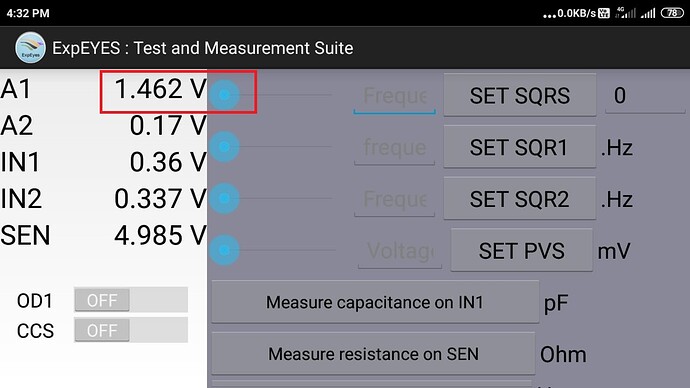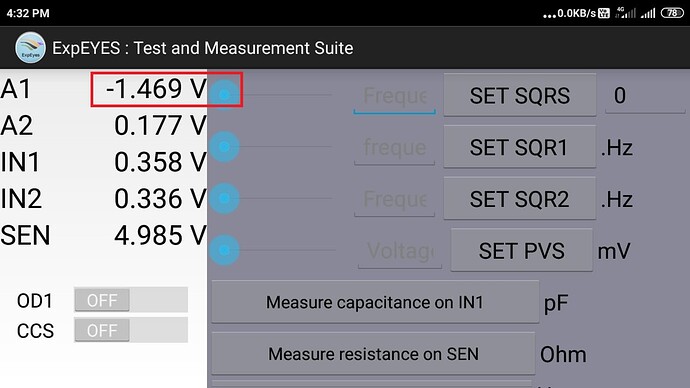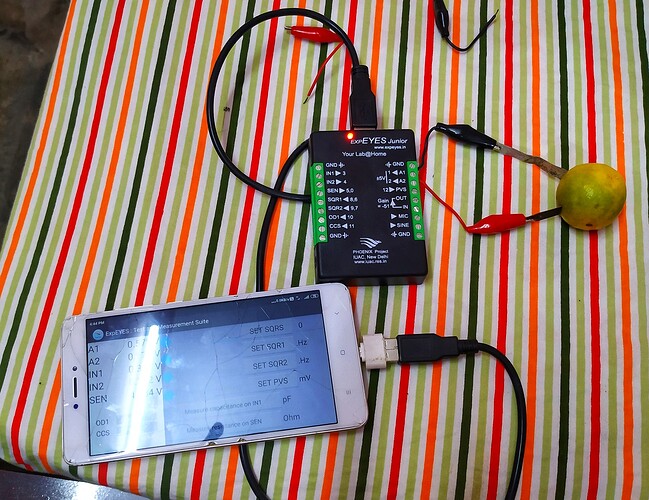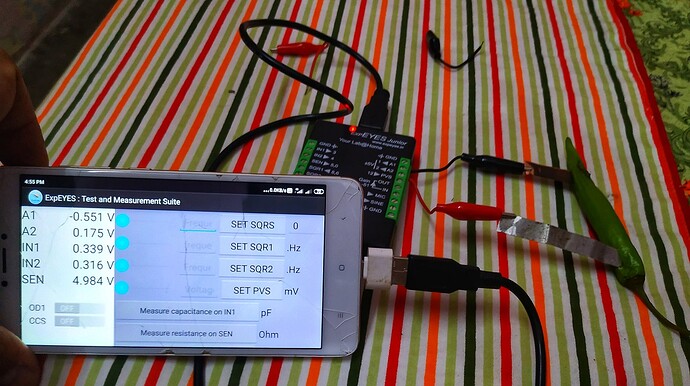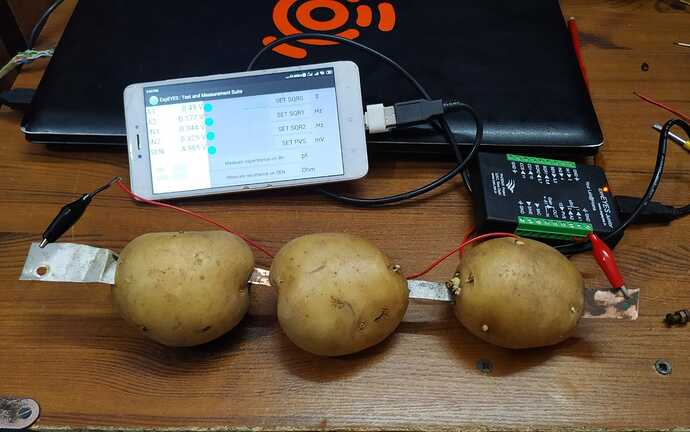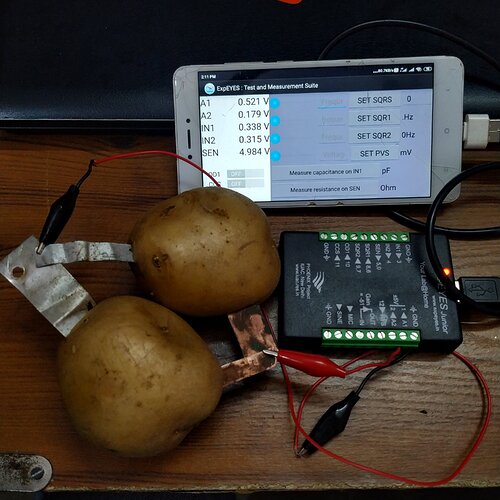An expEYES Jr kit (open hardware and software) that I acquired somewhere back in 2014 was lying about unused ever since. I had been contemplating its uses, exploring the possibilities for quite some time. Finally, put it to some use to measure the voltage of various vegetables.
For those who don’t know about expEYES can explore it at the following link:
Apparatus: expEYES Junior kit, an android mobile, expEYES mobile app, OTG connector to connect kit with the mobile, a 1.5 AAA cell, a lemon, a mango, an onion, a chilly, a potato, a copper strip and a zinc strip.
The setup for measuring the voltage of a cell is rather simple:
So, connected a 1.5 volt AAA cell and measured the following reading:
Reversing the poles resulted in the following reading:
Now it was time to find the voltage of various fruit and vegetables in the house. The setup was as follows:
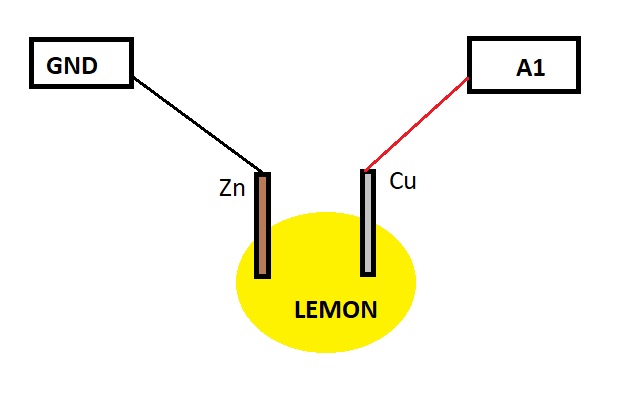
Readings:
| Object | Potential difference (V) | |
|---|---|---|
| Normal | Reversed | |
| Lemon | 0.585 | -0.58 |
| Onion | 0.59 | -0.604 |
| Raw Mango | 0.585 | -0.602 |
| Potato | 0.586 | -0.601 |
| Chilly | 0.551 | -0.502 |
I didn’t find much difference in the voltage recorded. May be its because all the fruit and vegetable have the same voltage.
While the booklet says that the voltage would be about 0.99 V, I found it to be less, an average reading of 0.6 Volts. It could be due to the size of the zinc and copper plates.
Anyhow, the booklet gives an example of about 50 different experiments that can be performed with the kit. Although I performed one on the easiest experiment listed, I think it could be a useful kit for conducting science experiments at the school level.
If there is anyone who has experience in this kit can certainly help me do more experiments.
https://expeyes.in/Expt17/expts.html

